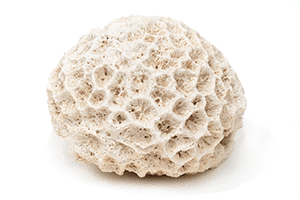What are Excipients?
Excipients are ingredients that perform a variety of roles in pharmaceuticals. Some excipients act as binders, pH adjustment, disintegrants, or other functions. While many may say that excipients are absolutely necessary for the production of pills, capsules,
Would you want to consume anything that is not nutritive?
While many may say that excipients are absolutely necessary for the production of pills, capsules, and other pharmaceuticals, we believe it’s unnecessary to take nutritional products which have questionable, potentially toxic, non-nutritive excipients.
Please note: tablets ALWAYS contain excipients (that is how they are made; they cannot be made without them); therefore, it is wisest to especially avoid nutritional products as tablets.
Here are a few examples of questionable excipients commonly found in nutritional products:
- Magnesium stearate – a cheap lubricating agent; research shows it to be immune-compromising
- Methyl paraben – a benzoate family member; a known cancer-causing agent
- Microcrystalline cellulose – a cheap filler
- Silicon dioxide – a cheap flowing agent (common sand)
- Natural flavors – an AKA for MSG (monosodium glutamate), a well-known neurotoxic agent
- Methacrylic copolymer – methacrylic acid, a component of the methacrylic acid copolymer, has been
reported to act as a teratogen in rat embryo cultures. - Triethyl citrate – a plasticizer
- Titanium dioxide – used for color; liver toxic
- Cornstarch – typically from cheap GMO corn; can invoke allergic responses
- Talcum Powder – a common excipient not listed on product labels; a suspected carcinogen
Other Questionable But Common Tableting and Encapsulating Agents:
- D&C red #33 Propylparaben
- Hydroxypropyl methylcellulose
Hydroxypropyl cellulose - Polyethylene glycol
- Red ferric oxide-orange shade
Methyl p-hydroxybenzoate - Propyl p-hydroxybenzoate
- Sodium acetate
Methylparaben - Sodium metabisulfite
- Eudragit
- Povidone (polyvinylpyrrolidone or PVP): PVP is a synthetic polymer used as a dispersing and suspending agent in virtually all encapsulated nutritional supplements;
considered to be a potential carcinogen. - Magnesium Stearate: This commonly used excipient can be made from animal or vegetable sources. It is used as a flowing agent an lubricant. It is insoluble in water and may hinder the absorption of nutrients. Research shows it suppresses the immune system.
- Maltodextrin: A refined sugar obtained by the hydrolysis of cornstarch. It is used for flavor, as a texturizer and bulking agent. Maltodextrin may contain free glutamate (MSG), which occurs as a result of processing. MSG is a known neurotoxin.
- Cellulose Starch: A starch made from plant material that is used as filler, binder, and disintegrant. Starches processed from corn contain free glutamate (MSG), resulting from processing. MSG is a known neurotoxin.
- Silicon Dioxide: Silica is a transparent, tasteless, powder that is practically insoluble in water. It is the main component of beach sand and is used as an absorbent and flow agent in supplements. It may hinder digestion or the uptake of other nutrients and deplete HCL.
- Resin: Resins are used as binders and aid in water resistance. They may be of plant or synthetic origin and are used in lacquers, varnishes, inks, adhesives, synthetic plastics,
and pharmaceuticals. Synthetic forms include polyvinyl, polystyrene, and polyethylene. Toxicity is dependent on the ingredients used in the manufacture of the resin. - Dicalcium Phosphate: A mineral complex of calcium and phosphorous that is commonly used as a tableting aid, filler or bulking agent. Phosphates can induce the same symptoms as
MSG in those who are extremely sensitive to MSG. - Polysorbate 80: A non-ionic surfactant that is a polymer containing oleic acid, palmitic acid, sorbitol, and ethylene oxide and is formed by microbial fermentation. It is used as an
emulsifier, dispersant, or stabilizer in foods, cosmetics, supplements, and pharmaceuticals. - Titanium Dioxide: This is an inorganic, white, opaque pigment made from anatase (metallic Minerals) that is often used in supplements as a whitening agent. Titanium dioxide is a pro-oxidant. It is also used in paints and coatings, plastics, paper, inks, fibers, food, and cosmetics.
- Polyethylene Glycol 3350: This excipient is used as an emulsifier, binder, and surfactant. It improves resistance to moisture and oxidation. Polyethylene is a polymerized ethylene resin
and glycol is a dihydric alcohol. - Pharmaceutical Glaze: This is actually shellac used to coat vitamin tablets. Shellac is insoluble in stomach acid and supplements coated with shellac are difficult for the
body to break down and assimilate.
RESOURCES
HealthLine www.healthline.cc
